Transforming a long, slender outdoor area into a lush and inviting oasis can seem like a daunting task. Narrow gardens, often found in urban settings or along the side of a house, present unique challenges with light, access, and layout. However, with strategic design and clever planting, these compact spaces can become stunning and functional extensions of your home. By embracing vertical space, playing with visual tricks, and choosing the right elements, you can unlock the hidden potential of your slim plot. These ideas will guide you in creating a beautiful, personalized retreat, proving that size is no barrier to a great garden.
1. Vertical Trellis for a Narrow Garden
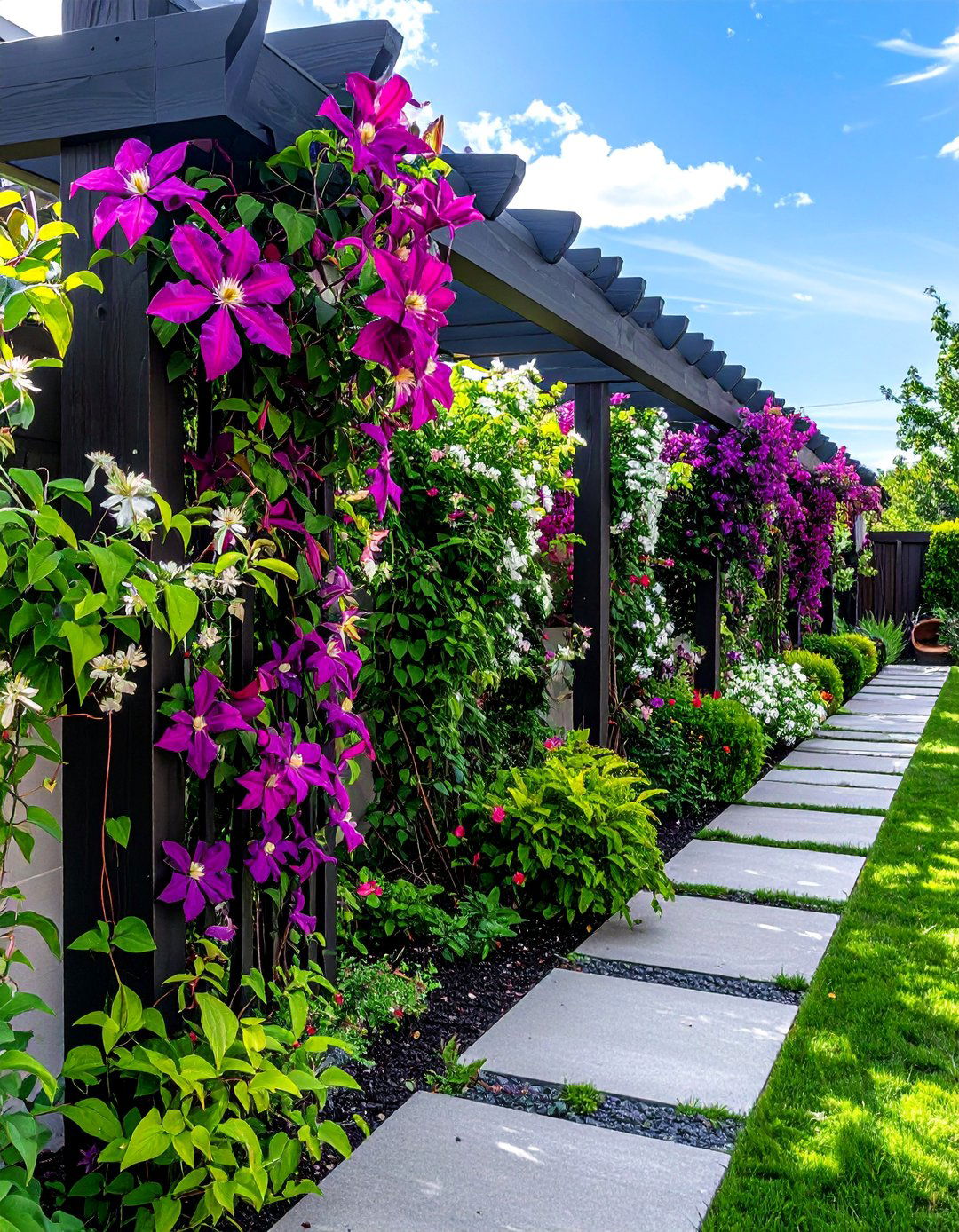
A vertical trellis is a fantastic solution for maximizing planting space in a narrow garden without encroaching on the limited floor area. By installing a sturdy trellis against a wall or fence, you can create a living wall of climbing plants like clematis, jasmine, or passionflower. This technique draws the eye upward, creating an illusion of height and spaciousness. Consider using a series of trellises to break up a long, monotonous wall, adding architectural interest and creating distinct green panels. This method not only adds vibrant color and lush foliage but also helps to soften hardscapes and provide additional privacy.
2. Raised Planter Beds in a Narrow Garden
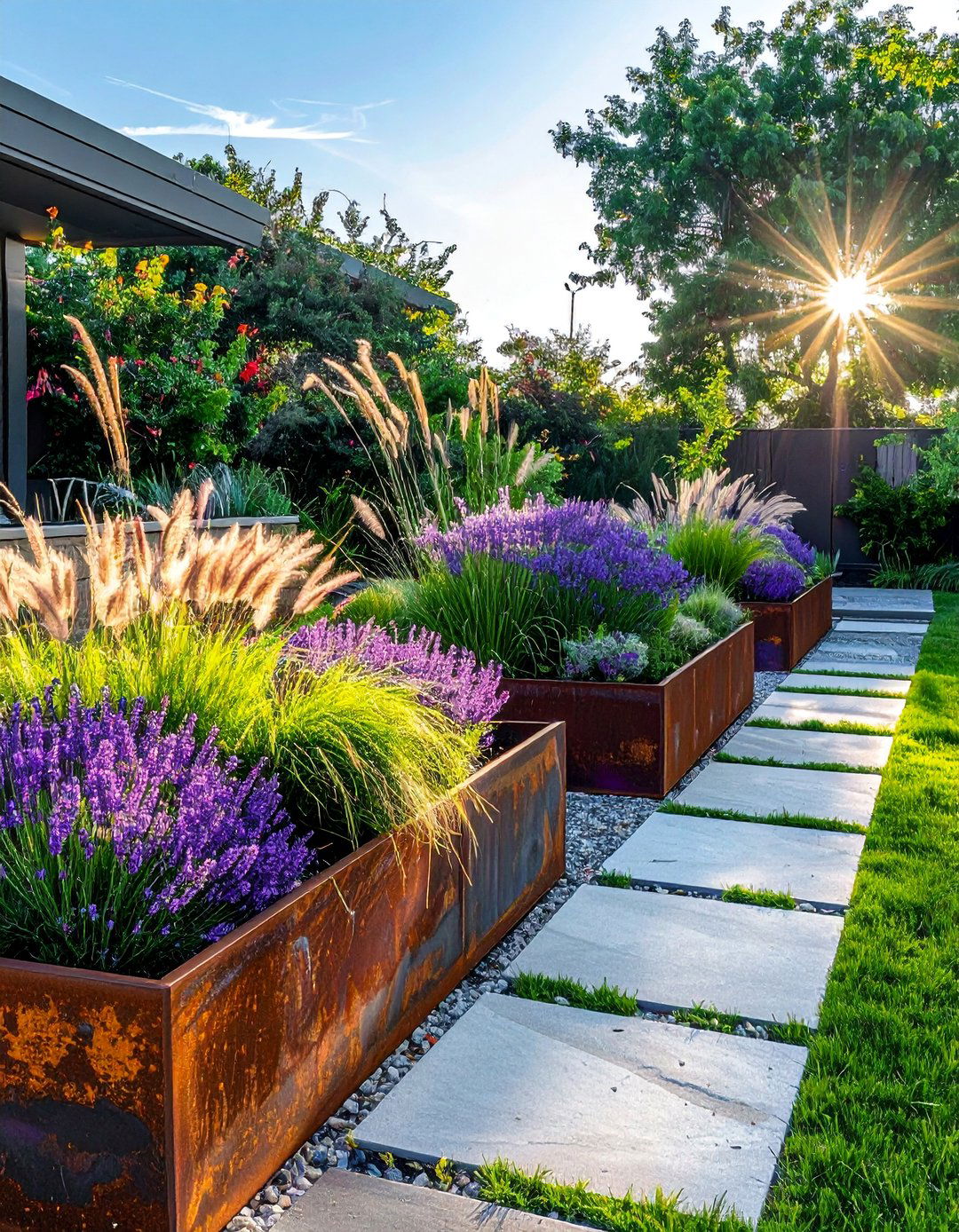
Introducing raised planter beds can bring structure and dimension to a narrow garden. Building beds of varying heights adds visual interest and helps to define different zones within the space, preventing it from looking like a simple corridor. Use materials like timber, corten steel, or rendered brick to complement your home's exterior. Raised beds are also practical; they offer better drainage, make gardening more accessible by reducing bending, and allow you to control the soil quality for specific plants. Planting them with a mix of architectural grasses, perennials, and small shrubs will create a layered, textured look that adds depth and character.
3. Espalier Fruit Trees for a Narrow Garden
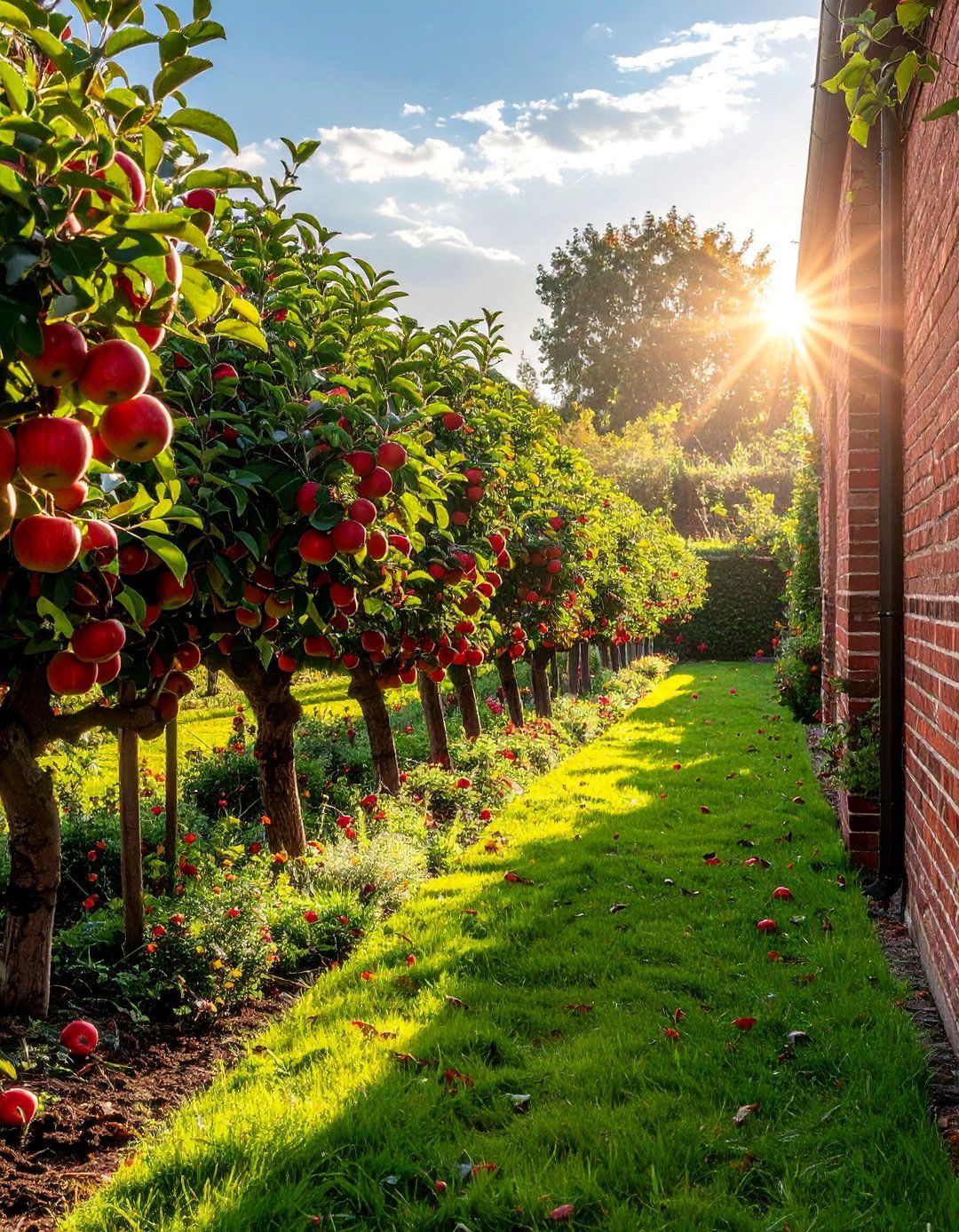
For those wanting to grow their own produce, espalier fruit trees are an ideal choice for a narrow garden. This ancient horticultural technique involves training trees to grow flat against a wall or trellis. Apples, pears, and plums are particularly well-suited for this method. Espaliered trees take up minimal ground space while still producing a generous harvest. They also function as a beautiful, living piece of art, with their sculptural branches providing year-round interest. This approach not only maximizes your growing potential but also adds a sophisticated, classic design element that elevates the entire aesthetic of your small space.
4. Winding Pathway in a Narrow Garden
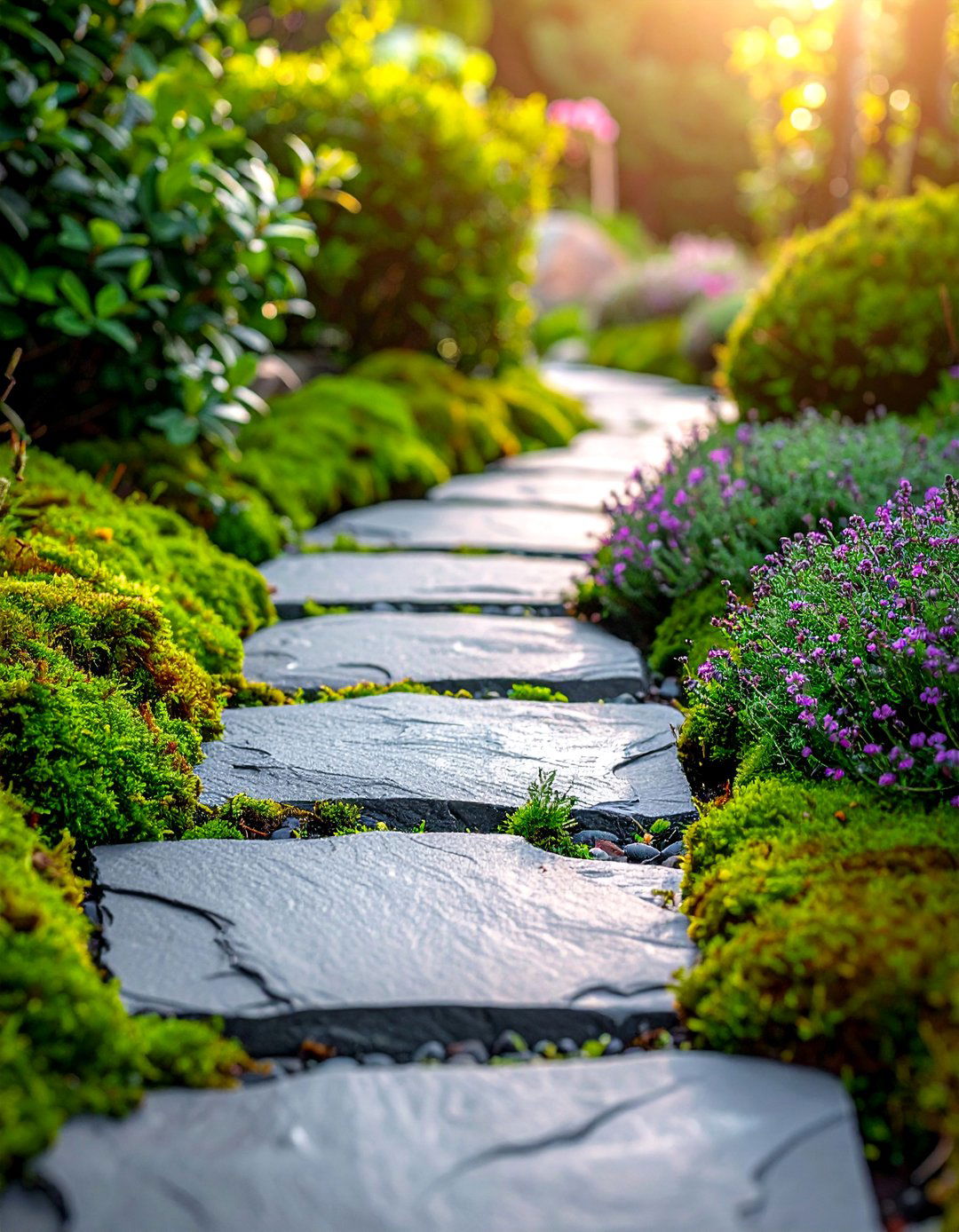
Creating a winding or staggered pathway is a classic design trick to make a narrow garden feel wider and more intriguing. A straight path can accentuate the length and narrowness of the space, leading the eye directly to the end. In contrast, a meandering path forces you to slow down, creating a sense of journey and discovery. Use materials like stepping stones, gravel, or small pavers to construct the path, and allow plants to spill over the edges to soften the lines. This illusion of movement and width transforms the garden from a simple passageway into an engaging and dynamic outdoor room.
5. Outdoor Mirrors to Enlarge a Narrow Garden
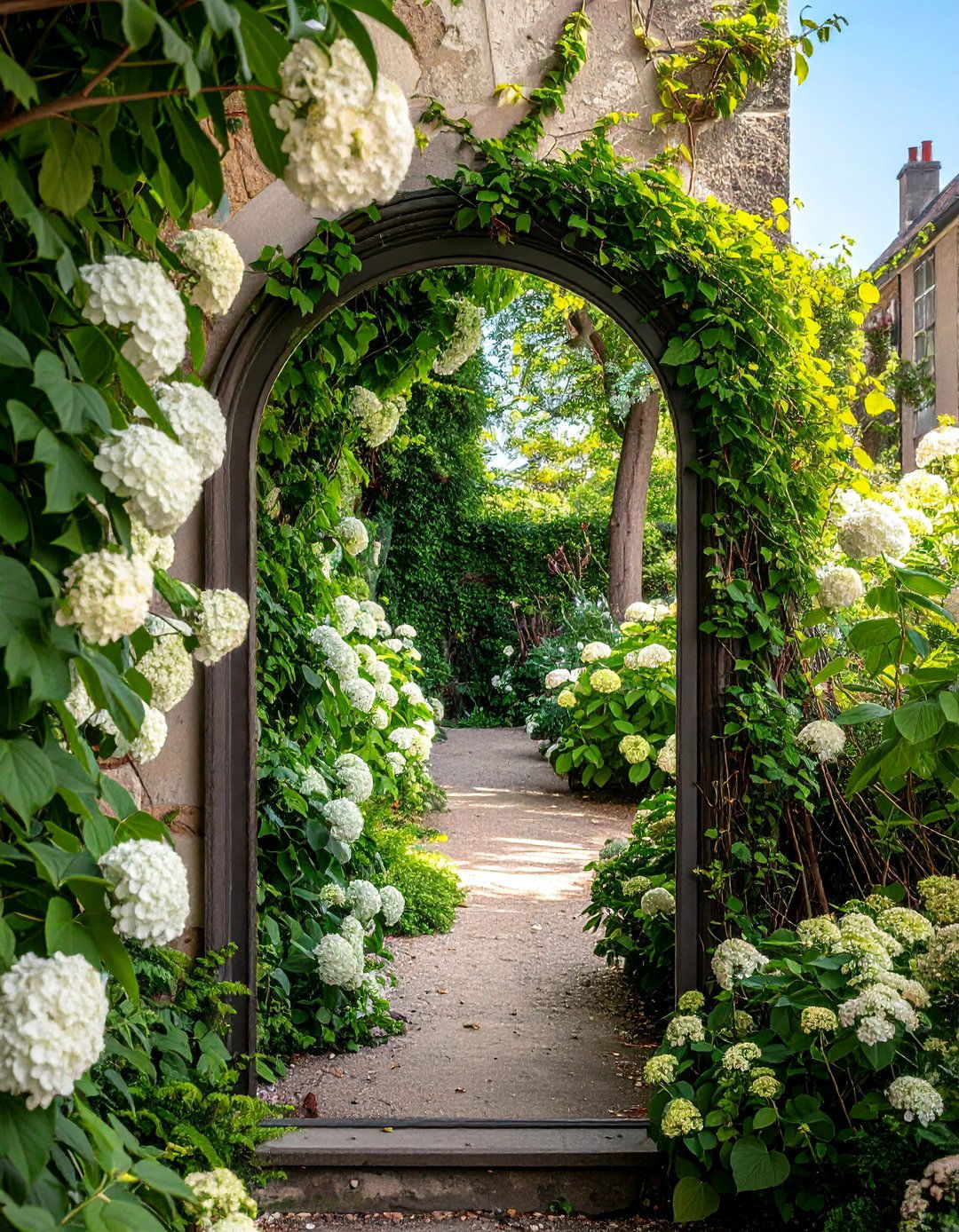
An outdoor mirror is a powerful tool for creating the illusion of space in a narrow garden. When placed strategically, a large, weatherproof mirror can reflect light and foliage, instantly making the area feel larger and brighter. Position it at the end of the garden to create a false perspective, suggesting the space continues beyond its actual boundary. Alternatively, place it along a side wall to reflect a particularly beautiful planting area, effectively doubling the visual impact. Framing the mirror with climbing plants will help it blend seamlessly into the garden, making the illusion even more convincing and magical.
6. Tiered Container Planting in a Narrow Garden
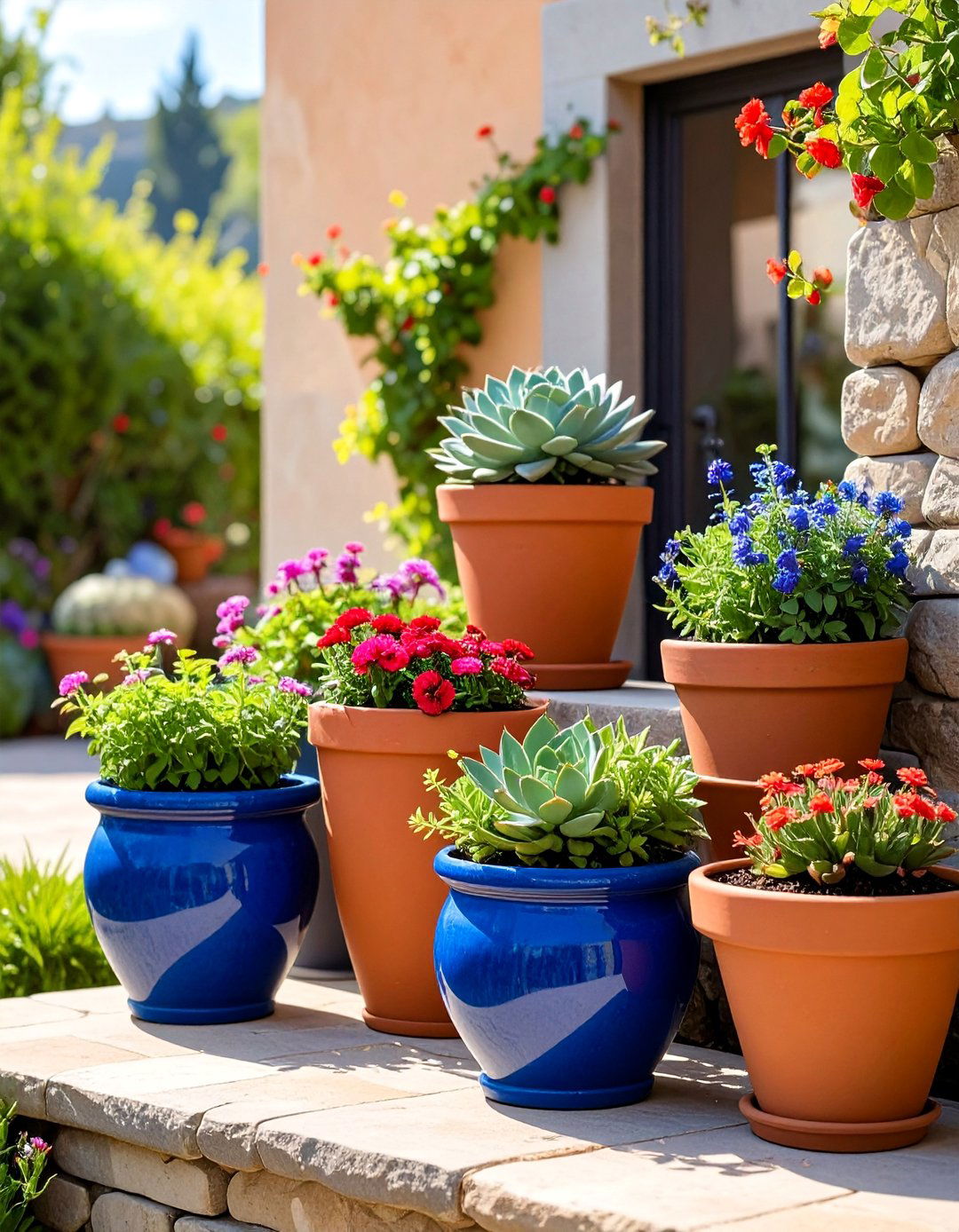
Utilizing tiered container planting is an excellent way to introduce layers and height into a narrow garden. Arrange pots of various sizes and heights in clusters to create lush, multi-level displays. This approach allows you to easily change your garden's look with the seasons and experiment with different plant combinations. Place taller containers at the back and smaller ones at the front to create a sense of depth. Using containers also gives you the flexibility to grow plants that may not be suitable for your garden soil. This method is perfect for adding pops of color and texture to patios or decked areas.
7. Pleached Trees for a Narrow Garden Screen
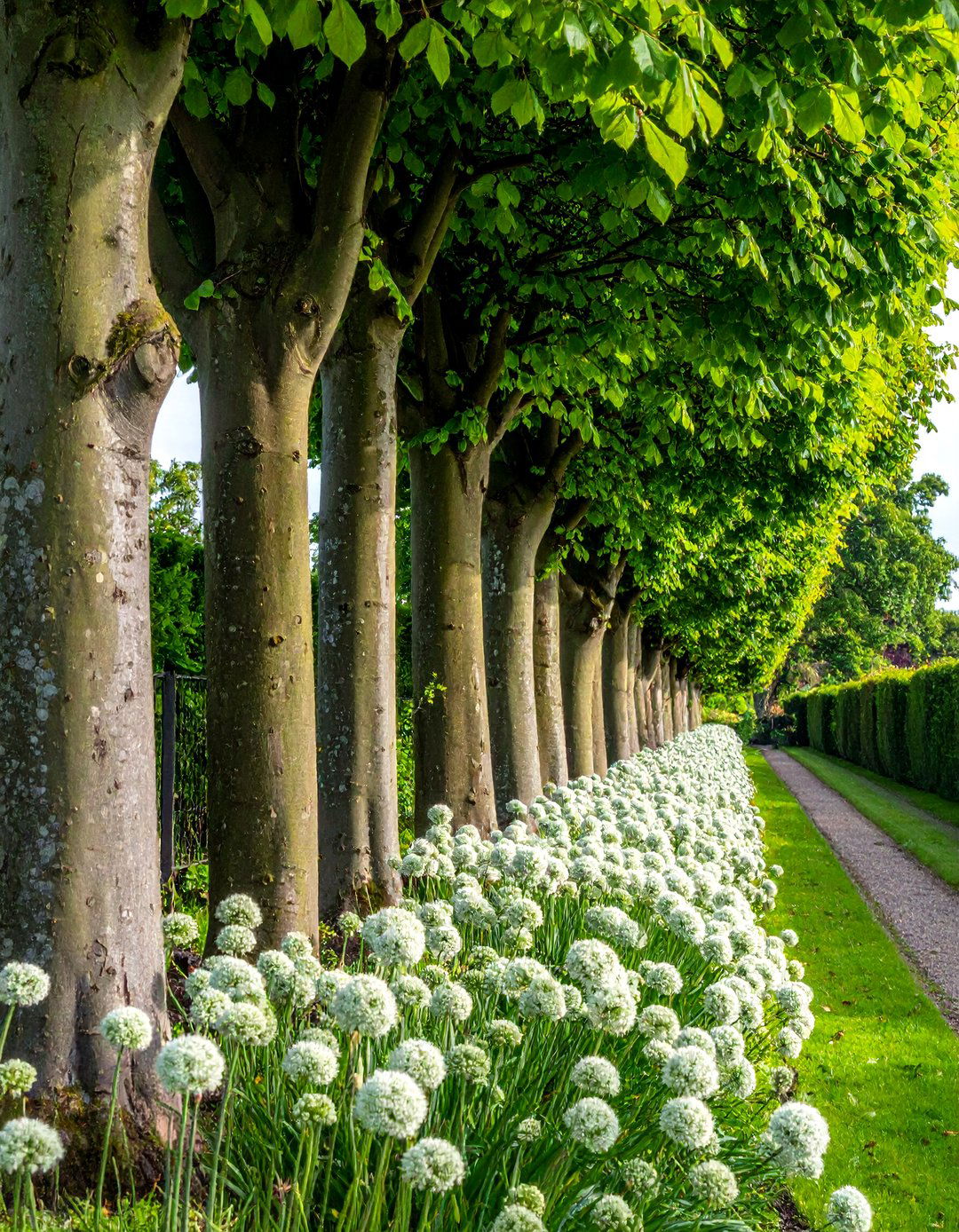
Pleached trees, often called "hedges on stilts," offer an elegant screening solution for a narrow garden without sacrificing ground-level space. These trees are trained to form a dense canopy on a clear stem, creating an elevated screen that provides privacy from neighboring properties. Planting a row of pleached hornbeam or linden trees along a boundary fence adds a strong architectural element and a touch of formal sophistication. The space underneath the canopy remains open, allowing for underplanting with ferns, hostas, or other shade-loving plants, thus maximizing every inch of your garden both vertically and horizontally.
8. Integrated Bench Seating in a Narrow Garden
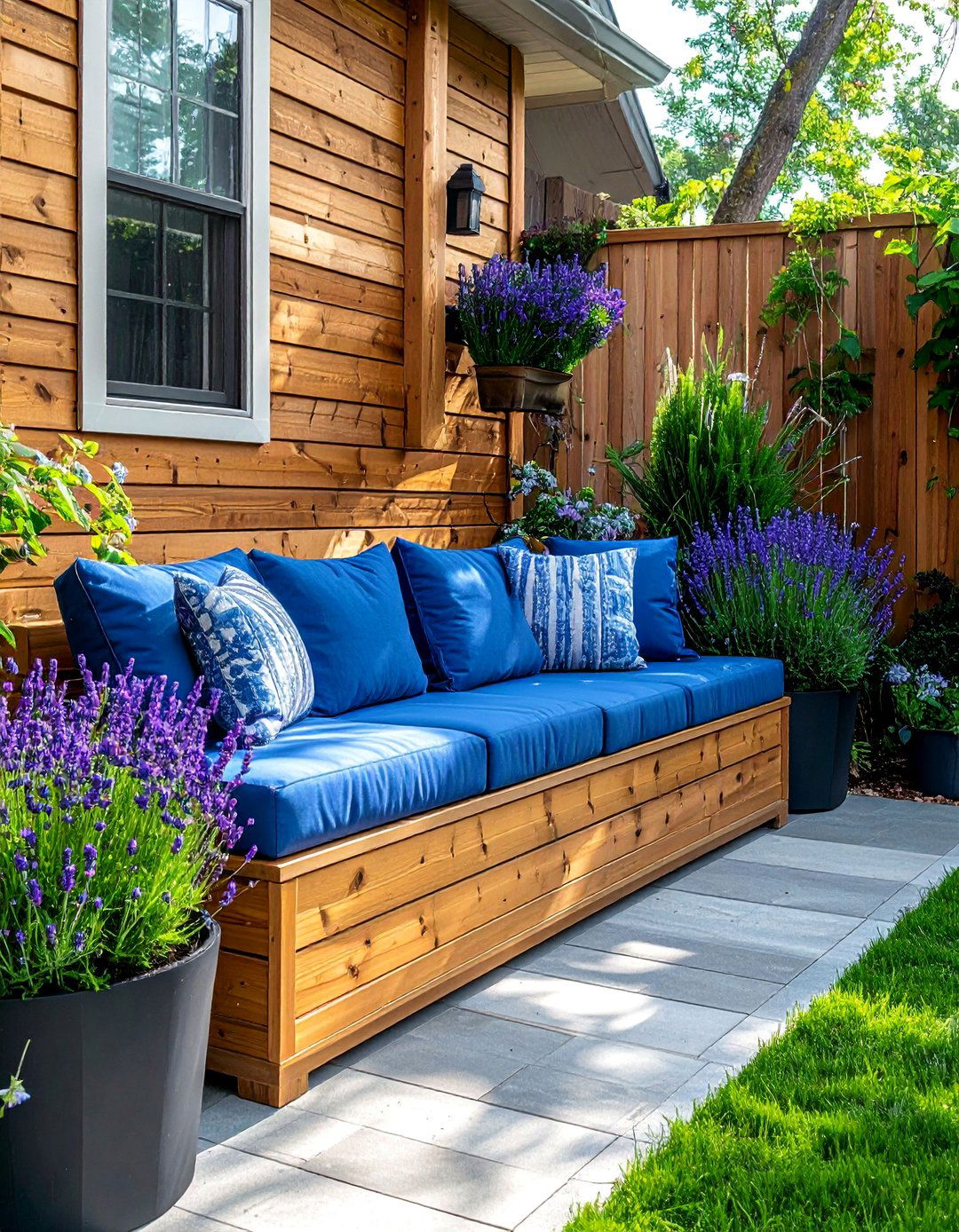
Building integrated bench seating is a smart, space-saving strategy for a narrow garden. A built-in bench, constructed along a wall or fence, eliminates the need for bulky, freestanding furniture that can obstruct the pathway. This provides a permanent, comfortable seating area while maintaining a clean, uncluttered look. You can incorporate storage beneath the bench for garden tools or cushions. Surrounding the seating with fragrant climbers and lush planters will create a cozy, immersive nook where you can relax and enjoy your outdoor space. This functional design element helps to make the garden feel like a true extension of your living area.
9. Zoning with Different Materials in a Narrow Garden
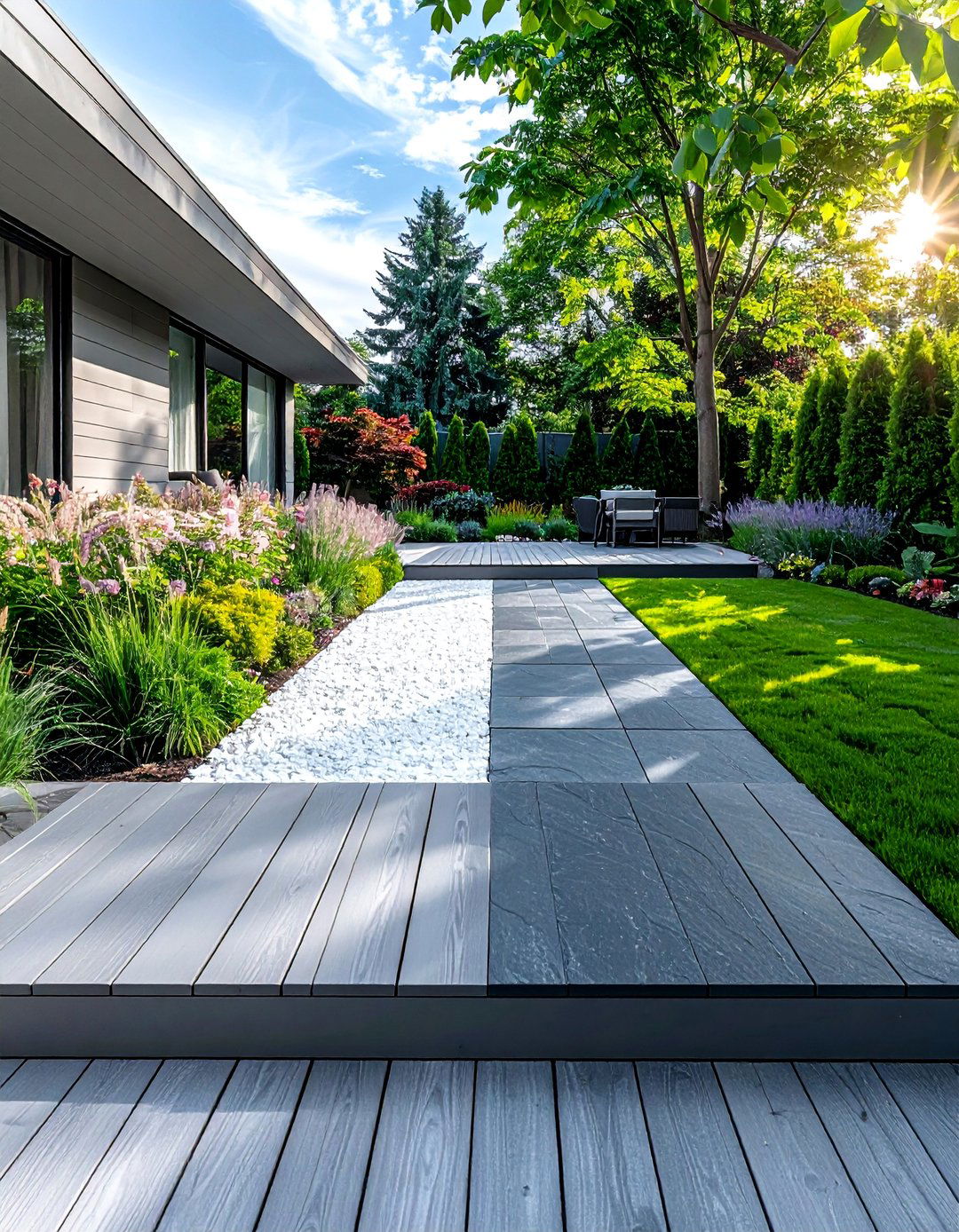
Dividing a narrow garden into distinct zones can make it feel larger and more purposeful. Use different flooring materials to visually separate areas for dining, lounging, and planting. For instance, you could have a small decked area for a bistro set near the house, a central gravel path, and a paved patio at the far end. This technique breaks up the long, linear sightline and encourages exploration of the space. Each zone can have its own character and planting style, adding variety and interest. This clever use of materials creates the impression of multiple "rooms" within the garden, making it more dynamic.
10. Water Feature as a Focal Point in a Narrow Garden
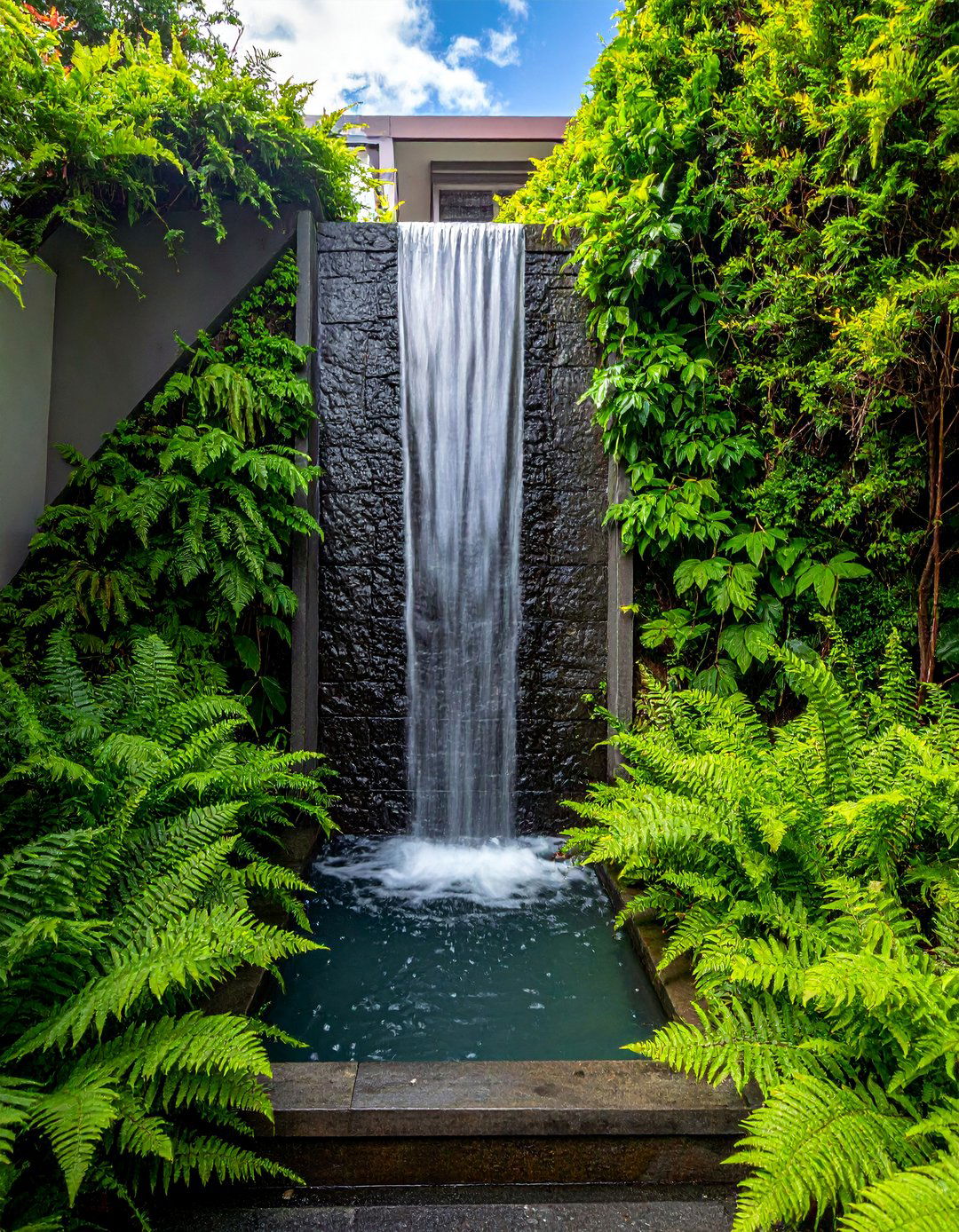
A water feature can serve as a captivating focal point in a narrow garden, diverting attention from the constricted dimensions. The gentle sound of trickling water adds a tranquil, sensory element that enhances the peaceful atmosphere. Choose a design that suits the scale of your space, such as a compact wall-mounted fountain, a slender bubbling monolith, or a small, contemporary rill. Placing the feature at the end of the garden or in a central nook draws the eye and creates a destination point. Surrounding it with moisture-loving plants like ferns and mosses will integrate it beautifully into the overall design.
11. Strategic Lighting for a Narrow Garden
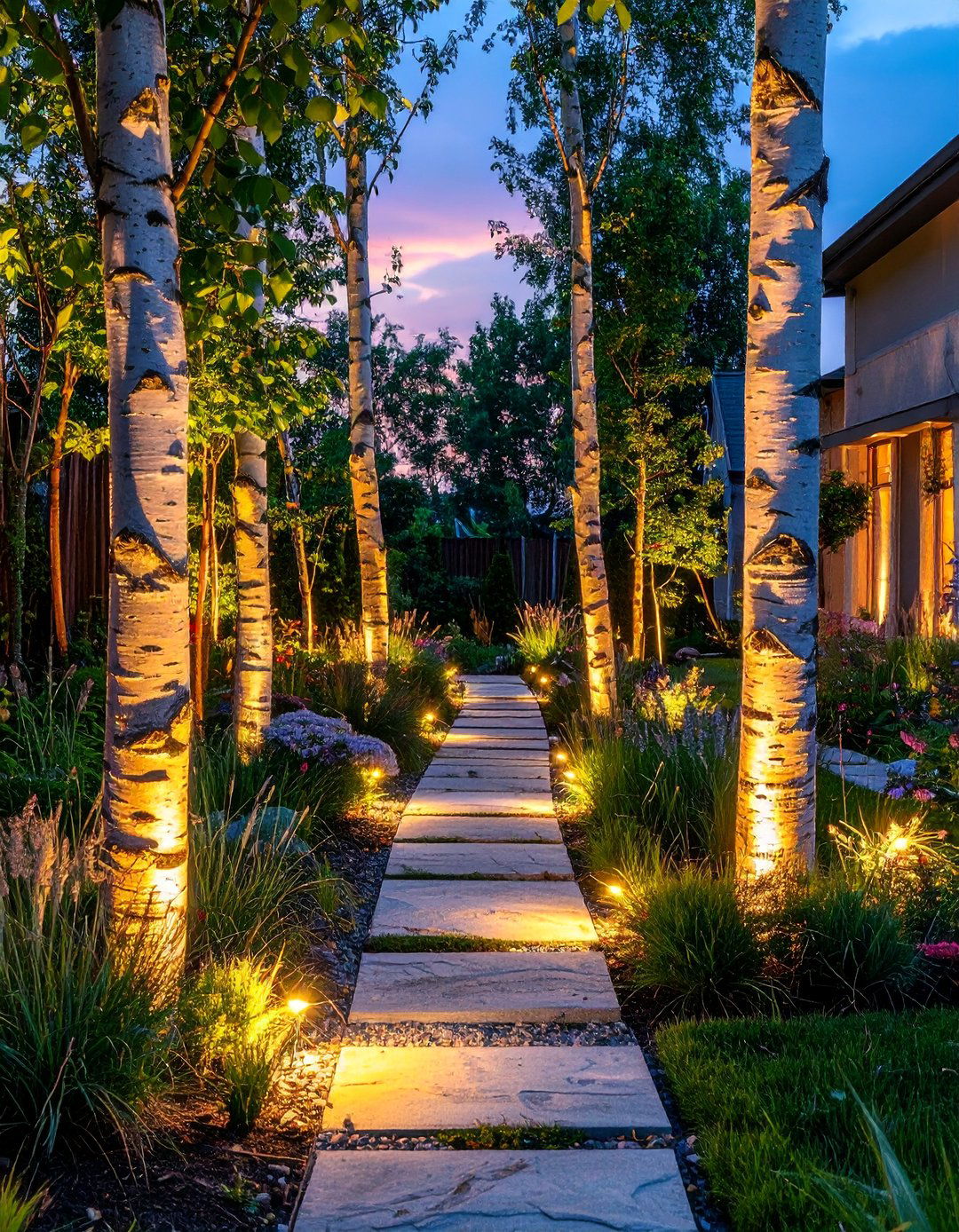
Effective lighting is crucial for transforming a narrow garden into a usable and magical space after dusk. Use a layered lighting scheme to add depth and drama. Uplighting trees or architectural plants creates striking silhouettes against walls and fences. Low-level path lights can guide the way along a winding path, enhancing safety and ambiance. String lights or fairy lights woven through a trellis or pergola can create a cozy, intimate atmosphere for evening entertaining. By highlighting key features and casting soft glows, strategic lighting can make the garden feel wider and more enchanting at night.
12. Using a Light Color Palette in a Narrow Garden
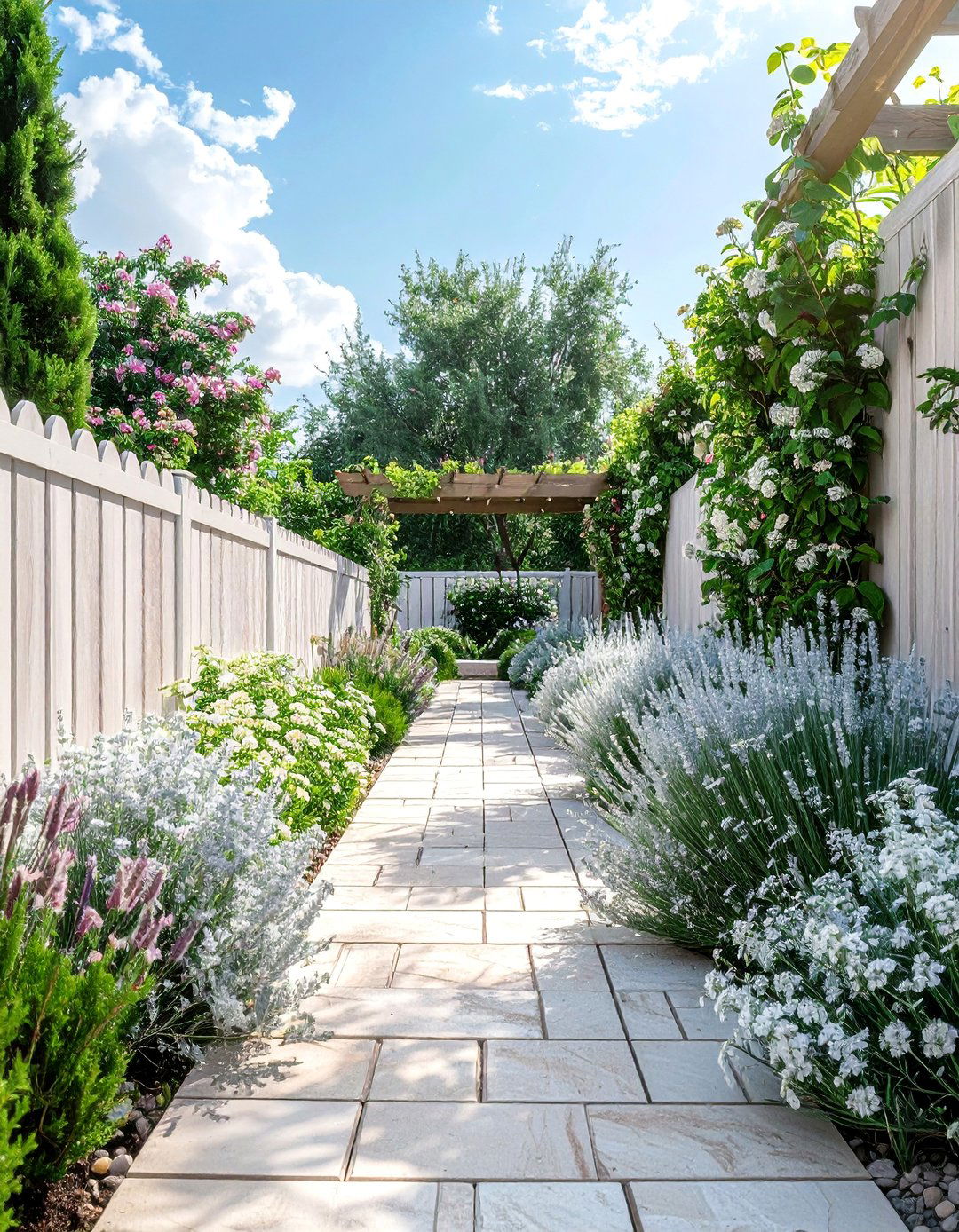
Employing a light color palette for fences, walls, and paving can make a narrow garden feel more open and airy. Pale colors like white, cream, or light grey are highly reflective and will bounce light around the space, making it feel brighter and larger. Painting a boundary fence a light color can make it recede, reducing the sense of enclosure. Complement this with plants that have silver or variegated foliage and flowers in cool tones of white, blue, and lavender. This cohesive and light-toned approach creates a serene and spacious feel, counteracting the shadows often found in long, narrow areas.
13. A Living Wall System in a Narrow Garden
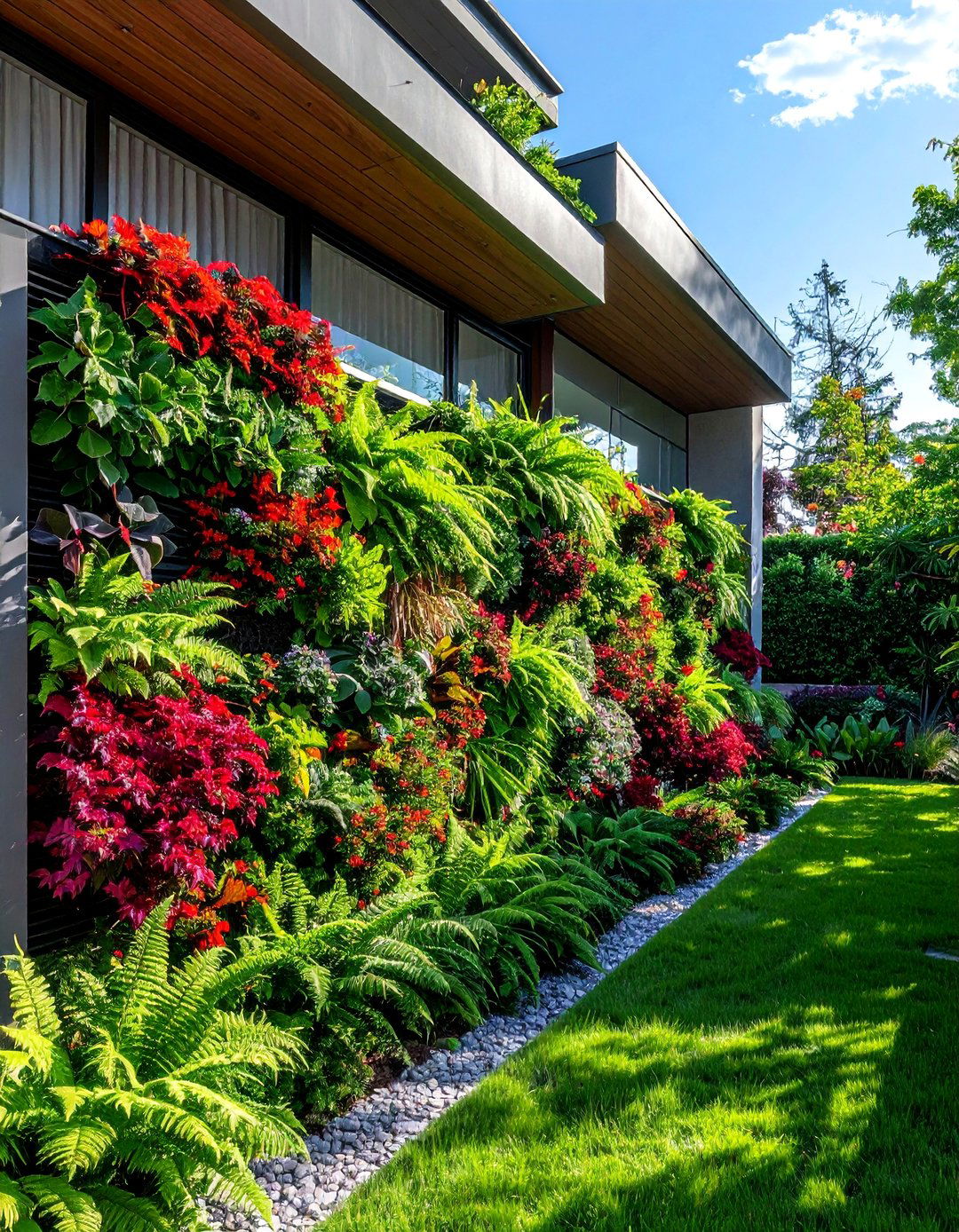
A living wall, or green wall, is a spectacular way to introduce a mass of greenery into a narrow garden without using any floor space. These vertical systems consist of panels or pockets where a variety of plants can be grown directly on a wall. You can create a stunning tapestry of textures and colors using a mix of ferns, succulents, herbs, and trailing plants. A living wall not only acts as a dramatic focal point but also improves air quality and can help insulate the adjoining building. It's a modern, high-impact solution that turns a plain boundary into a vibrant, living work of art.
14. Creating a Hidden Destination in a Narrow Garden
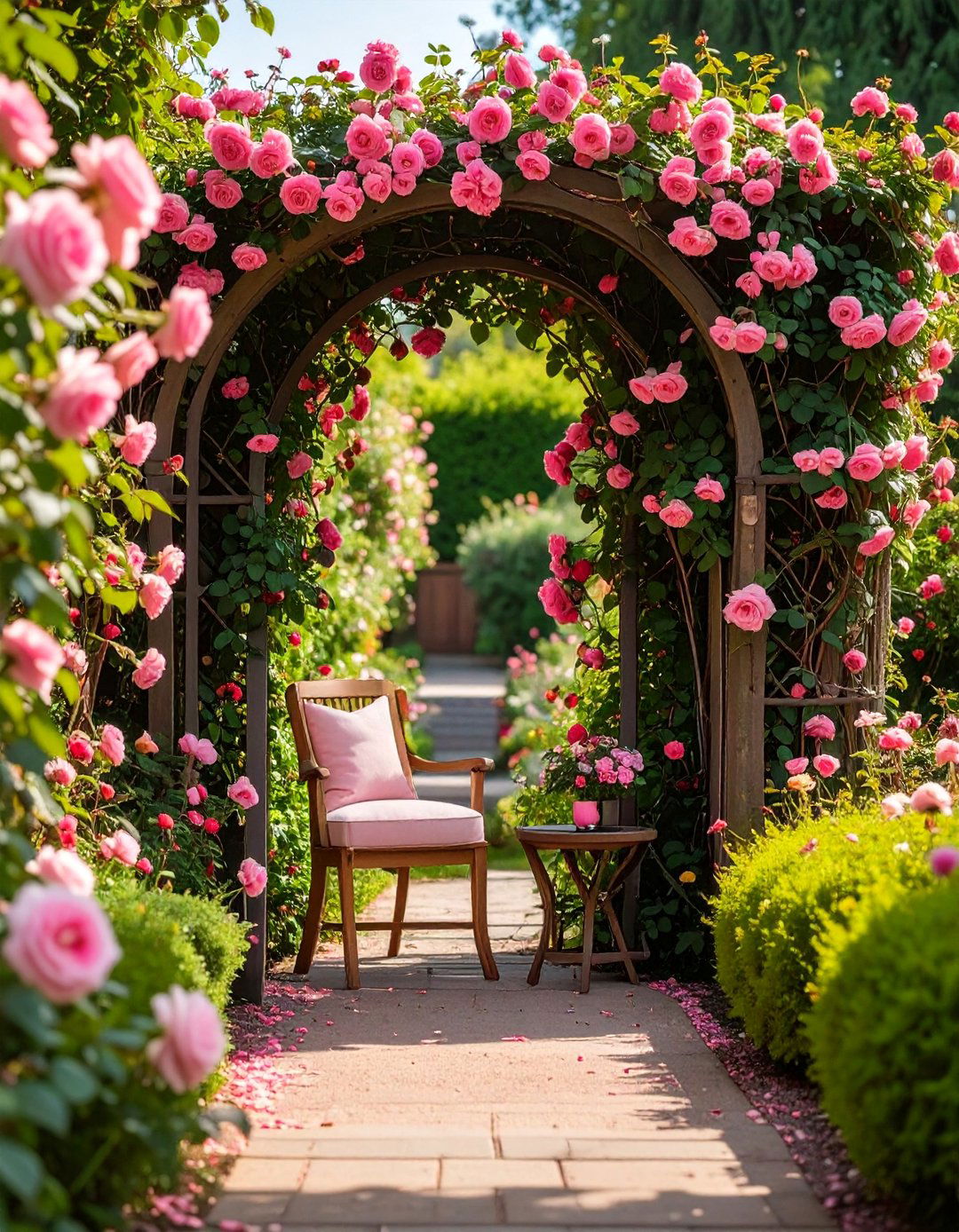
Designing your narrow garden to lead to a hidden destination or seating area at the far end adds an element of surprise and purpose. Obscure the view of the end of the garden using a decorative screen, a small archway covered in climbers, or a strategically planted shrub. This encourages exploration and makes the journey through the garden more rewarding. Once you round the corner or pass through the arch, a secluded spot with a single chair or a small bench can provide a peaceful retreat. This technique transforms the garden from a simple corridor into an intriguing space with a clear destination.
15. Slimline Furniture for a Narrow Garden
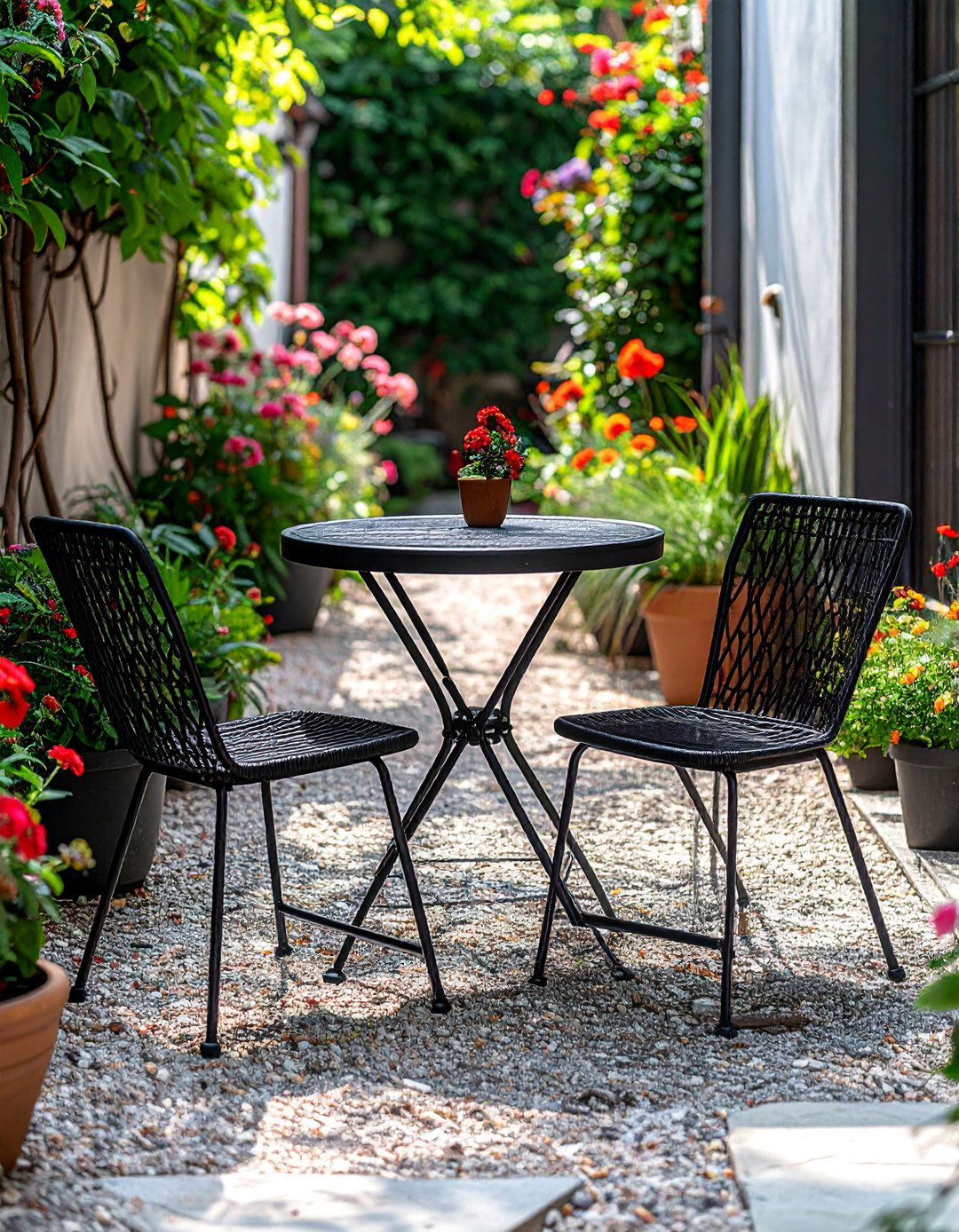
Choosing the right furniture is essential for maintaining a sense of openness in a narrow garden. Opt for slimline, lightweight, and multi-functional pieces. A bistro set with a small round table and two chairs is a classic choice that fits neatly into a small nook. Look for foldable or stackable furniture that can be easily stored when not in use. Consider long, narrow tables for dining areas to better suit the garden's proportions. Materials like metal or rattan with an open-weave design appear less bulky than solid wood, helping to preserve the visual flow and prevent the space from feeling cluttered.
16. Diagonal Paving Patterns in a Narrow Garden
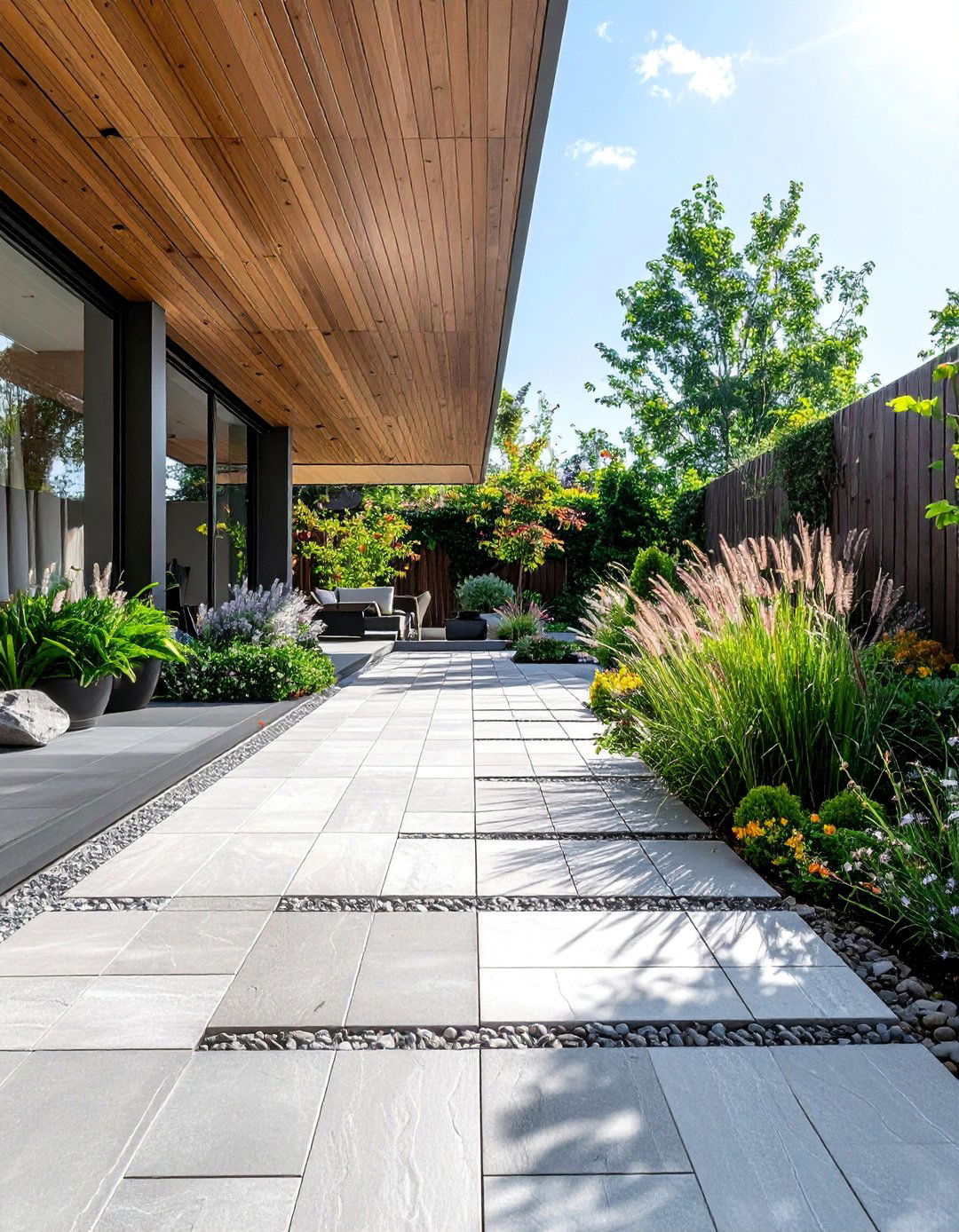
The way you lay your paving can have a significant impact on the perception of space in a narrow garden. Laying pavers or decking boards on a diagonal (at a 45-degree angle) can trick the eye and make the area appear wider than it actually is. This dynamic pattern draws the eye outwards towards the corners rather than straight down the length of the garden. The intersecting lines create a sense of movement and visual interest that breaks up the long, linear feel of the space. This simple but effective technique can dramatically alter the garden's perceived proportions.
17. Planting Bold, Architectural Plants in a Narrow Garden
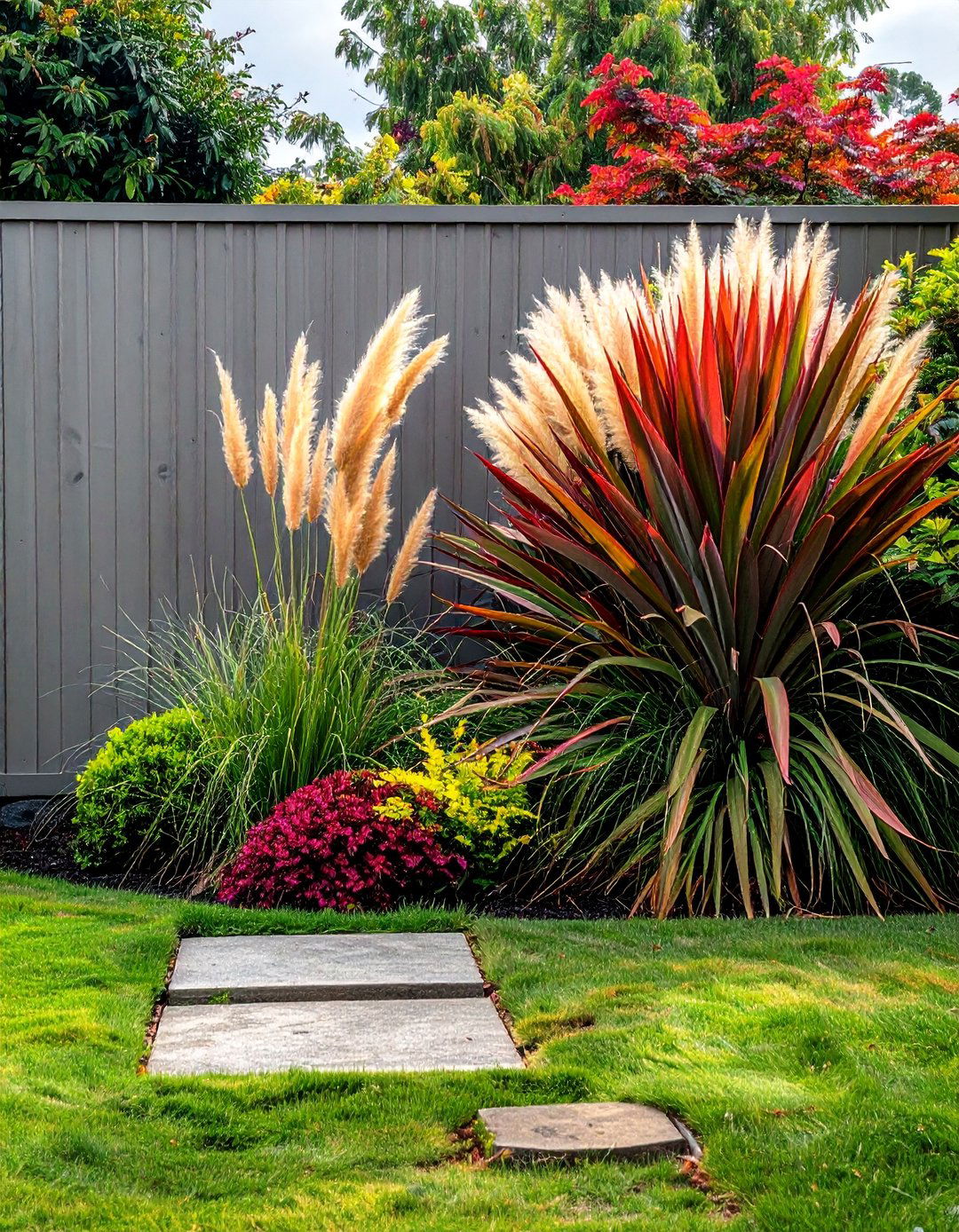
Instead of filling a narrow garden with lots of small, fussy plants, consider using a few larger, architectural plants to create a bold statement. Plants with strong, sculptural forms like ornamental grasses, phormiums, or tree ferns can act as living sculptures and create powerful focal points. Their dramatic shapes and textures add interest and structure without making the space feel cluttered. Placing them strategically can help to draw the eye and define different areas. This "less is more" approach results in a clean, contemporary look that feels both spacious and impactful, proving that you don't need a lot of plants for a stunning effect.
18. Hanging Baskets and Window Boxes for a Narrow Garden
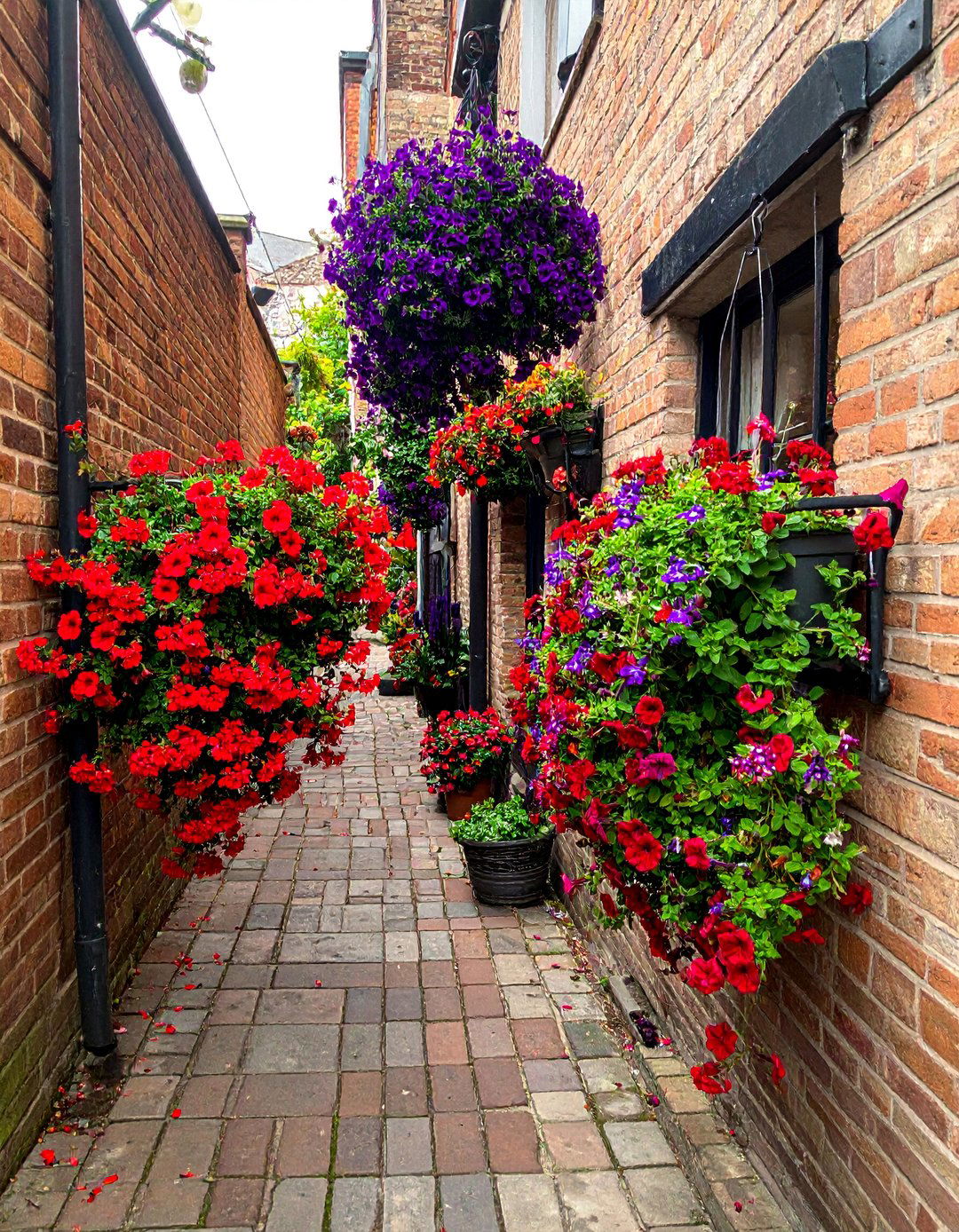
Maximizing every available surface is key in a narrow garden, and hanging baskets and window boxes are perfect for this. These elements allow you to add vibrant color and lush foliage at eye level without taking up any precious ground space. Attach baskets to sturdy wall brackets or hang them from a pergola. Window boxes can be fixed to walls, railings, or the tops of fences. Fill them with a mix of trailing plants like ivy or petunias, and upright flowers for a full, cascading effect. This is an easy and affordable way to layer your planting and bring greenery to otherwise bare surfaces.
19. A Slim Pergola for a Narrow Garden
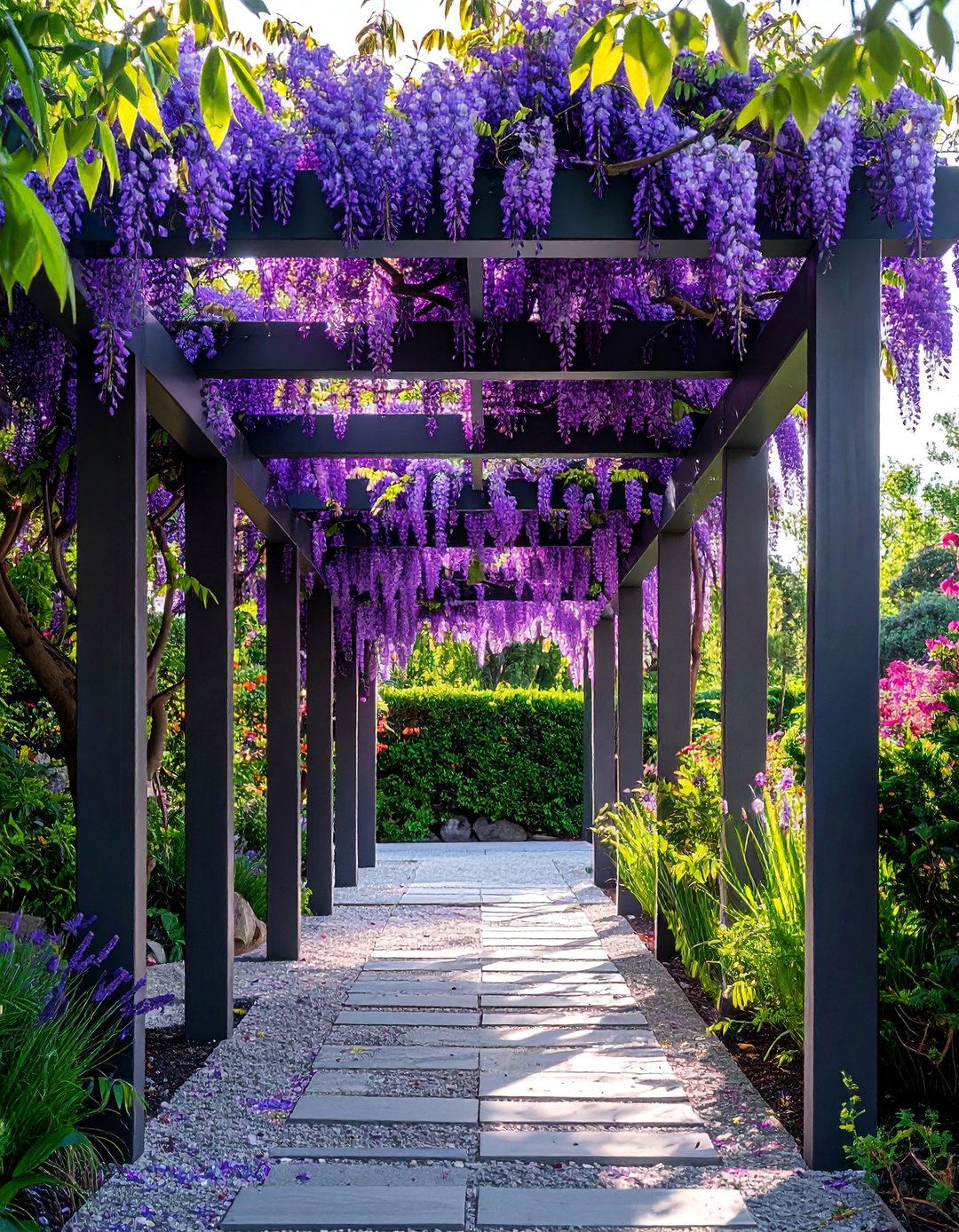
Installing a slim pergola can add height and a sense of enclosure to a narrow garden without making it feel claustrophobic. A simple, slender structure running along one side or over a pathway can define the space and provide support for climbing plants like wisteria, roses, or grapevines. This vertical element draws the eye upwards, creating an illusion of more space. It also helps to create a more intimate, room-like feel and can cast beautiful, dappled shadows on sunny days. A pergola can transform a simple walkway into a beautiful, scented tunnel, adding a touch of romance and architectural interest.
20. Disguising Boundaries in a Narrow Garden
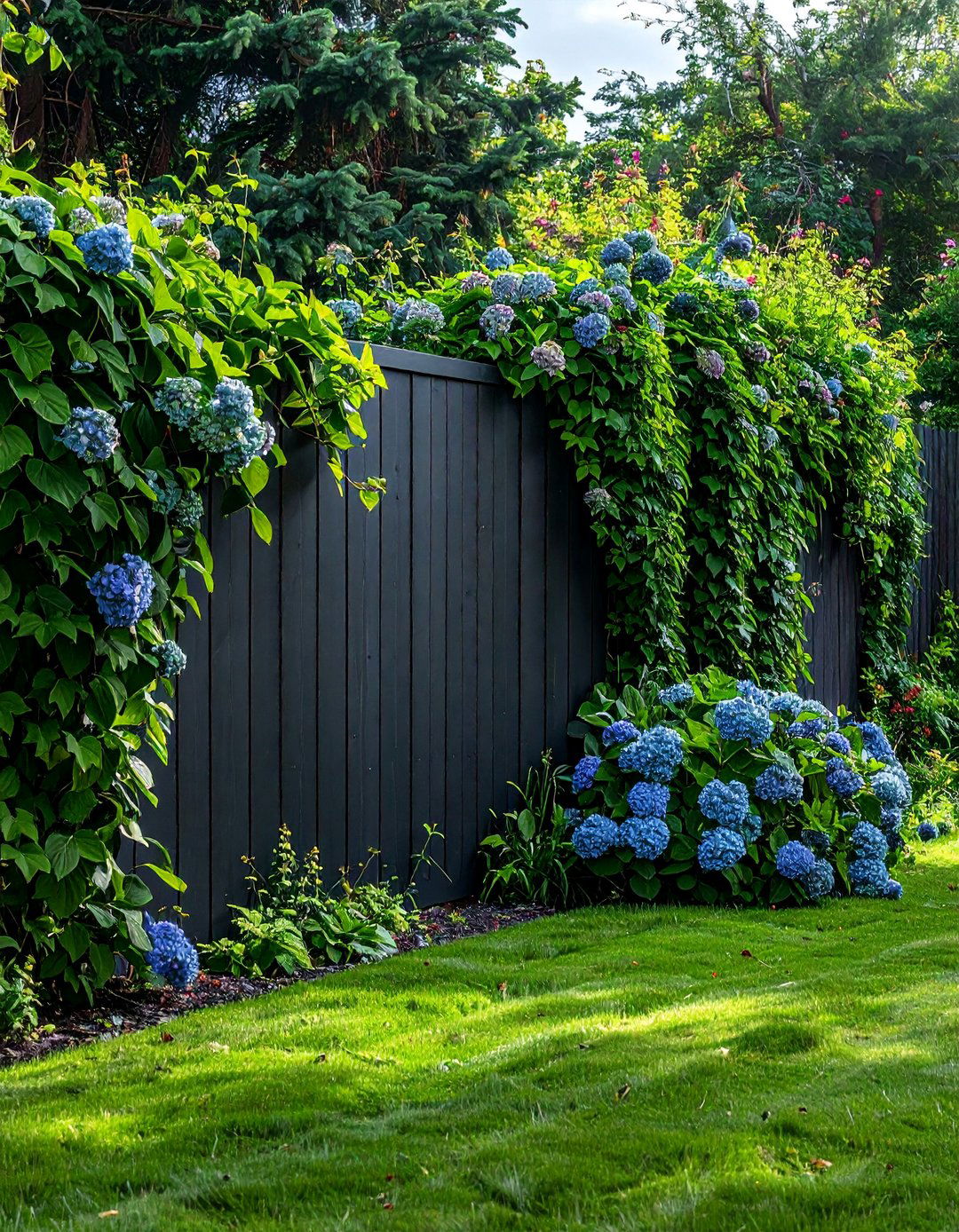
Making the boundaries of a narrow garden less obvious can help to create a more expansive feel. Painting fences and walls a dark color, such as charcoal grey or deep green, can make them visually recede, especially when covered with plants. The dark background makes the foliage of climbers and shrubs stand out, creating a sense of depth. Allowing climbing plants to completely cover a wall or fence can effectively blur the edges of the garden, making it feel less contained. This technique helps to create a more immersive, naturalistic environment where the focus is on the plants rather than the restrictive boundaries.
Conclusion:
A narrow garden, far from being a limitation, is an opportunity for creative and impactful design. By implementing strategies like vertical planting, clever use of materials, and visual tricks with mirrors and pathways, you can transform a constrained area into a functional and beautiful outdoor retreat. The key is to think vertically, create distinct zones, and choose furniture and plants that are proportionate to the space. With careful planning and a bit of imagination, your long, slender garden can become one of the most cherished and inviting parts of your home.









Leave a Reply